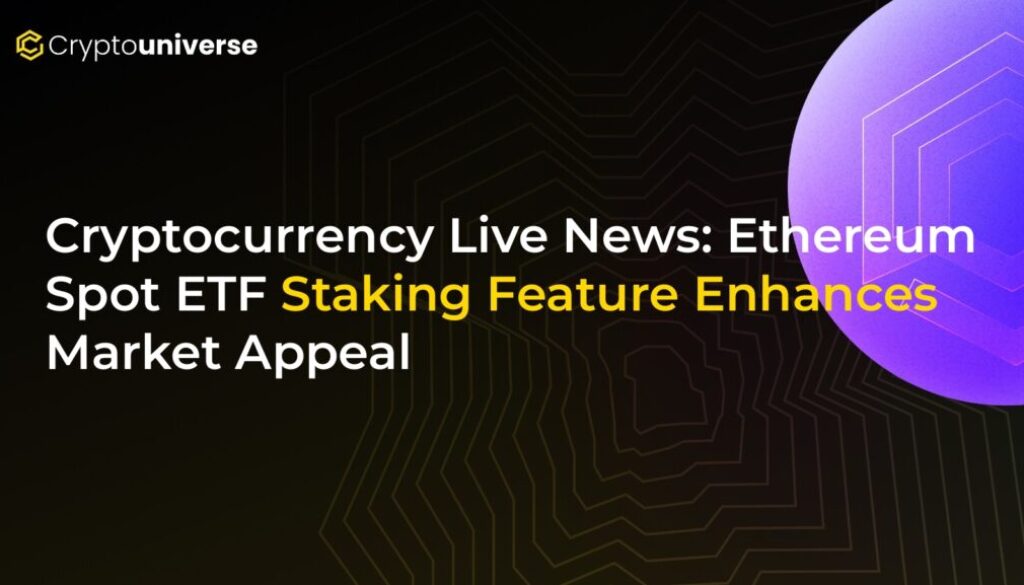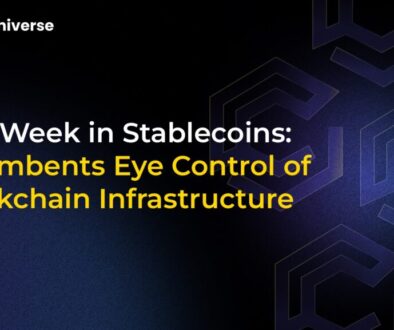Cryptocurrency Live News: Ethereum Spot ETF Staking Feature Enhances Market Appeal

Ethereum ETFs and India’s Stablecoin Stance: A New Chapter for Global Crypto Adoption
The cryptocurrency landscape is buzzing with two monumental developments that could reshape the future of digital assets. In the United States, the conversation around Ethereum Spot ETFs has taken an exciting turn with the potential inclusion of staking rewards. Simultaneously, a powerful signal has emerged from one of the world’s largest economies, as India’s Finance Minister calls for nations to prepare for stablecoin integration. These events, though geographically separate, weave a common narrative of crypto’s accelerating journey into the mainstream financial world.
Let’s dive into what these developments mean for investors, the market, and the future of blockchain technology.
The Game-Changer: Why Staking is the Secret Sauce for Ethereum ETFs
The approval of Bitcoin Spot ETFs was a landmark moment, opening the floodgates for institutional investment. Now, all eyes are on the next big prize: an Ethereum Spot ETF. But issuers are looking to add a compelling feature that could make these products even more attractive: staking.
What is Staking and Why Does It Matter?
In simple terms, staking is the process of actively participating in transaction validation on a proof-of-stake blockchain like Ethereum. By locking up their ETH, users help secure the network and, in return, earn rewards—similar to earning interest in a savings account.
For an ETF, including a staking feature means the fund could generate an additional yield for its investors on top of any price appreciation of Ethereum itself. This
Supercharging Demand and Market Dynamics
An Ethereum ETF with a staking component could be a magnet for capital for several reasons:
- Enhanced Returns: Investors would benefit from both ETH’s price movements and a consistent yield from staking rewards, creating a powerful dual-income investment vehicle.
- Competitive Advantage: It would make holding the ETF more attractive than holding ETH directly for many investors, as the fund would handle the technical complexities of staking.
- Supply Shock Potential: A significant portion of ETH purchased by these ETFs would likely be staked and locked up, reducing the circulating supply available on the open market. Basic economics suggests that reduced supply amid rising demand could have a positive impact on price.
However, the path isn’t entirely clear. The U.S. Securities and Exchange Commission (SEC) has historically been cautious about staking services, and regulatory discussions are ongoing. The final decision on whether staking will be included will be a pivotal moment for the industry.
A Global Shift: India’s Finance Minister Urges Stablecoin Preparedness
While the US debates ETF structures, a major policy signal is coming from the East. Indian Finance Minister Nirmala Sitharaman has urged nations to develop a coordinated approach to stablecoins, acknowledging both their potential and their risks. This marks a notable evolution from India’s previously skeptical stance on cryptocurrencies.
From Caution to Proactive Planning
The Finance Minister’s call for preparation rather than prohibition is a significant development. It suggests that the Indian government recognizes the inevitability of digital assets and is shifting its focus towards creating a regulatory framework to manage them effectively. This pragmatic approach could set a precedent for other nations navigating the complexities of crypto regulation.
The Potential and Perils for India’s Financial System
Sitharaman highlighted the dual nature of stablecoins, emphasizing the need for a balanced perspective. The potential benefits for a country like India are immense:
- Financial Inclusion: Providing access to digital financial services for a vast, underbanked population.
- Remittances: Streamlining the process for the millions of Indians abroad who send money home, potentially reducing fees and transfer times.
- Innovation: Fostering a domestic ecosystem for fintech and blockchain development.
At the same time, she acknowledged the challenges, which include maintaining monetary sovereignty, ensuring financial stability, and preventing illicit activities. Crafting regulation that harnesses the benefits while mitigating the risks will be India’s key task ahead.
Connecting the Dots: A Maturing Global Crypto Market
These two stories—one about a sophisticated institutional product in the US and the other about foundational policy in India—are two sides of the same coin. They both point to a single, undeniable trend: the maturation and integration of cryptocurrency into the global financial system.
The push for a staking Ethereum ETF demonstrates the demand from traditional finance for more complex and yield-bearing crypto products. Meanwhile, India’s evolving stance shows that major governments are moving beyond a binary “ban or allow” debate towards creating nuanced regulatory frameworks. Both are essential steps for the long-term health and growth of the digital asset economy.
As these events unfold, the world is watching. The decisions made in the coming months regarding ETF features and national crypto policies will undoubtedly set the stage for the next wave of innovation and adoption.


